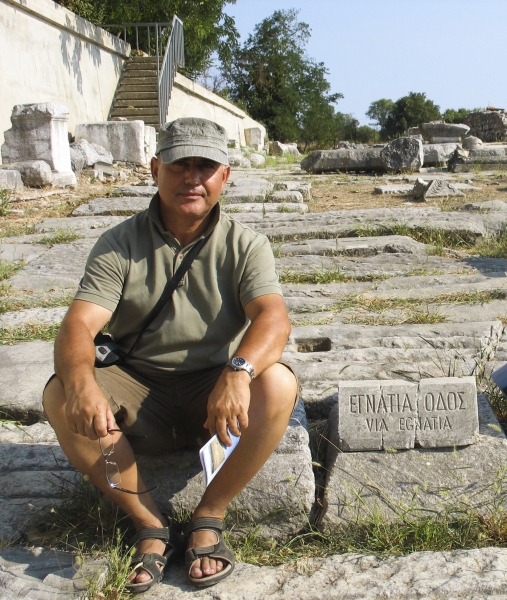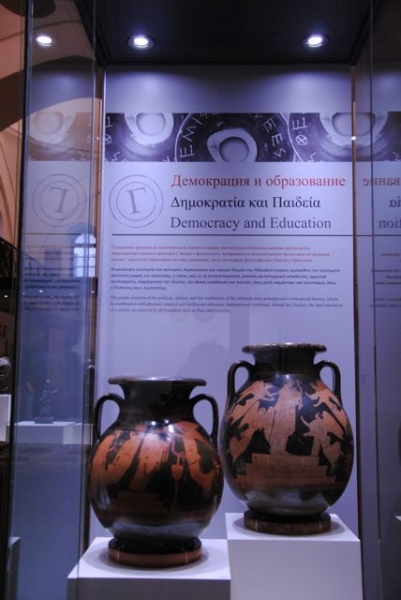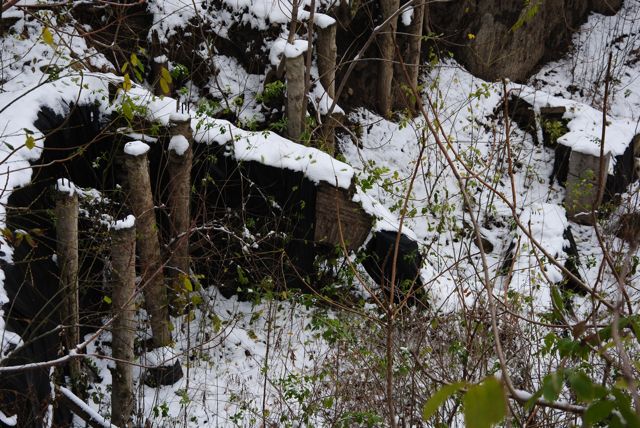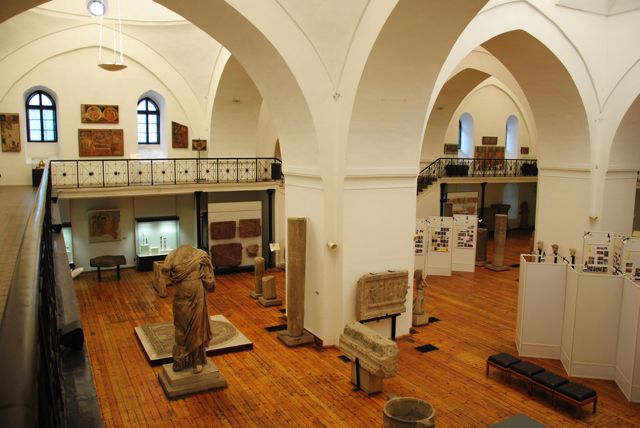Associate Professor Dr Lyudmil Vagalinski was born in 1958. He graduated in history with an archaeological profile from Sofia University "St. Kliment Ohridski" and specialized in Berlin and Munich. Since 2010, he has been director of the National Institute of Archaeology with Museum, the Bulgarian Academy of Sciences. Here is his interview with Polina Spartyanova.
 - Which are the richest countries in Europe in terms of history?
- Which are the richest countries in Europe in terms of history?
- In Europe, Bulgaria, Greece and Italy can boast the richest heritage, dating back to the most ancient times of humanity. If we talk about the antiquity from the VI century BC to the VI century AD, there are many archaeological sites and artefacts from that era. We are located at the crossroads of many important roads from Central Europe to Asia Minor, for example, and therefore many nations have left a mark of their culture here.
- What are the similarities and differences between the heritages of these three countries?
- Generally, there are many similarities between the cultural heritage of Greece and that of the south-eastern part of the Balkans. Bulgarian culture was created by close ethnic and cultural groups of Greeks and Thracians that were in contact for centuries. The Greeks themselves based their markets and colonies in Ancient Thrace, not only along the Black Sea coast but also inside the country, thus giving rise to the beginning of a kind of Para-Balkan culture.
The similarities with Italy date back to the time of Ancient Rome when the Balkan region was part of the empire that affected the local cultures.

- What are the basic periods of antiquity in Bulgaria?
- The period of antiquity started in the VI century BC when the first Greek colonies were created. They started spreading their urban traditions here and Thrace became part of the ancient Mediterranean world. This period ended in the VI century AD with the government reforms carried out by Emperor Heraclius. In this era, the Thracian culture and lifestyle, which are the subjects of our research even today, were very clearly distinguished.
- Where is the largest number of archaeological sites of this period in Bulgaria?
- The most distinguished place of this period is the Black Sea coast. In fact, the sea is a gateway to the world and, for this reason, there are a lot of materials, objects and artefacts from that period there. The oldest town in Bulgaria is Apollo, Sozopol now, which was founded in 607 BC by Greek emigrants and which was a colony of the city of Miletus. Inside Bulgaria there is a large number of Thracian archaeological sites too but the archaeological sites from the ancient period are concentrated along the Black Sea coast.
 - Currently, the National Archaeological Museum is hosting an exhibition of treasures from Greek museums. What could you tell us about the cooperation with your Greek counterparts?
- Currently, the National Archaeological Museum is hosting an exhibition of treasures from Greek museums. What could you tell us about the cooperation with your Greek counterparts?
- Our museum is displaying 195 exhibits from the National Archaeological Museum and the Numismatic Museum in Athens under the title "Leaving a Mark on History." The National Archaeological Museum in Sofia has not hosted a major foreign exhibition over the past 25 years and so we are very pleased with the cooperation with our Greek colleagues. Together with them, we have also been able to create, in the form of comics, a very good book for children. It has been translated into Greek and Bulgarian and allows young readers to explore things that are common in the ancient culture of Bulgaria and Greece. I am very glad that, despite the crisis, our Greek colleagues have found the courage to motivate the Greek institutions and businesses to unite their efforts and properly present Greece in Bulgaria.
- Are you planning a "visit" of Bulgarian archaeological exhibits to a museum in Greece?
- Since 2012 I have had different ideas for a joint exhibition in Greece and I have discussed them with my colleagues there, but we have not been able to realize them for various reasons. We can reread the history of Byzantium and ancient Bulgaria together because it is not just about wars during the reign of Tsar Samuel and Basil II, known as "the Bulgar-slayer". History does not disunite as believed by many Balkan politicians; it rather unites as long as we are well intentioned and able to read from different angles.
- What is happening now with the excavations of old Serdica, which have been unearthed during the construction of the second underground line in Sofia?
- The team of the National Institute of Archaeology with Museum is working on this site and we have unearthed very well preserved finds of the period from the I century to the IV century. At first, the representatives of Sofia municipality were sceptical as regards the state of the remains of Serdica and therefore we had to fight with them to preserve this historic find. Many times, I have said that one can build a new plant but one cannot restore destroyed archaeological heritage. The archaeologists have done their job in connection with old Serdica and now Sofia municipality and the Ministry of Culture have to decide how to present these finds to the public.

- What is the fate of the amphitheatre of Serdica, which is the second one in a European capital after the Colosseum in Rome?
- Its eastern section was at risk of demolition during the construction of the eponymous hotel in its region. We had terrible fights with the owners of the land but, in the end, they realized our ideas and now the remains of the arena are displayed in the entrance of the hotel. Unfortunately,
the western half of the amphitheatre, which is located near the Youth Theatre, is sinking into oblivion because the National Electric Company wanted to erect in this place a building with underground garages and the owners of the adjacent plots have claims on it too. Sofia municipality should intervene more decisively in this conflict in order for things to move forward and for this unique find to be displayed. However, only one capital in Europe has an amphitheatre on its territory and that is Rome.
- In 2014 Bulgaria will mark 1,000 years since the death of Tsar Samuel and it is planning various events on this occasion. Have you discussed this issue with your colleagues from Macedonia?
- In fact, we have not discussed this topic with them as I have doubts that they would respond appropriately. Science in Macedonia is politicized and even if they want to, they will not be able to take an appropriate scientific position. Unfortunately, there ideology controls science to the degree of travesty, especially if we look at the things that are being built in Skopje. The Macedonians are trying to form their own nation, which, of course, is their right, but it does not happen by stealing history, as everyone should create their own history. We will organize an international conference on the anniversary of Tsar Samuel’s death and we hope that their representatives will take part in it too.

- How do you manage to fight off Bulgarian treasure-hunters?
- The archaeologists can only warn of their illegal activities and get frustrated. Treasure-hunting destroys not only our work and profession but also us as a nation. On the one hand, treasure hunting hysteria is due to poverty in Bulgaria but on the other, it is due to the markets and auctions, which are being organized in Western Europe and the USA. Very often, they criticize us for not preserving our heritage and for not fighting treasure-hunting, and, at the same time, they cannot explain why they allow auctions with our findings that, apparently, have been illegally exported from Bulgaria. Treasure-hunters are aggressive people and very rich people; public persons, stand behind them, who behave very arrogantly, presenting themselves as "donors" of finds. They destroy a number of acropolises and ancient cities, donating everything they consider useless. We need to create an unfavourable environment for treasure hunters in Bulgaria by constantly informing the public about the findings of archaeologists because this is the only way for us to preserve our cultural and historical heritage. However, it is not only ours; it also belongs to the generations that will come after us.
- What about your present work along the South Stream route?
- By law we are required to explore all archaeological sites along the route of the pipeline and to find a way to preserve them. We are experiencing some difficulties due to bad weather but we are continuing to work. We are about to sign a contract connected with the archaeological excavations at a later stage and to monitor the operation of "South Stream" joint-stock company. We have already localized over 100 sites that could be affected by this project and many more that we have been unable to localize will certainly appear during the construction works. At present, we have a good cooperation with the investor and the Ministry of Culture and I hope that our good relationships will continue until the end of the project.